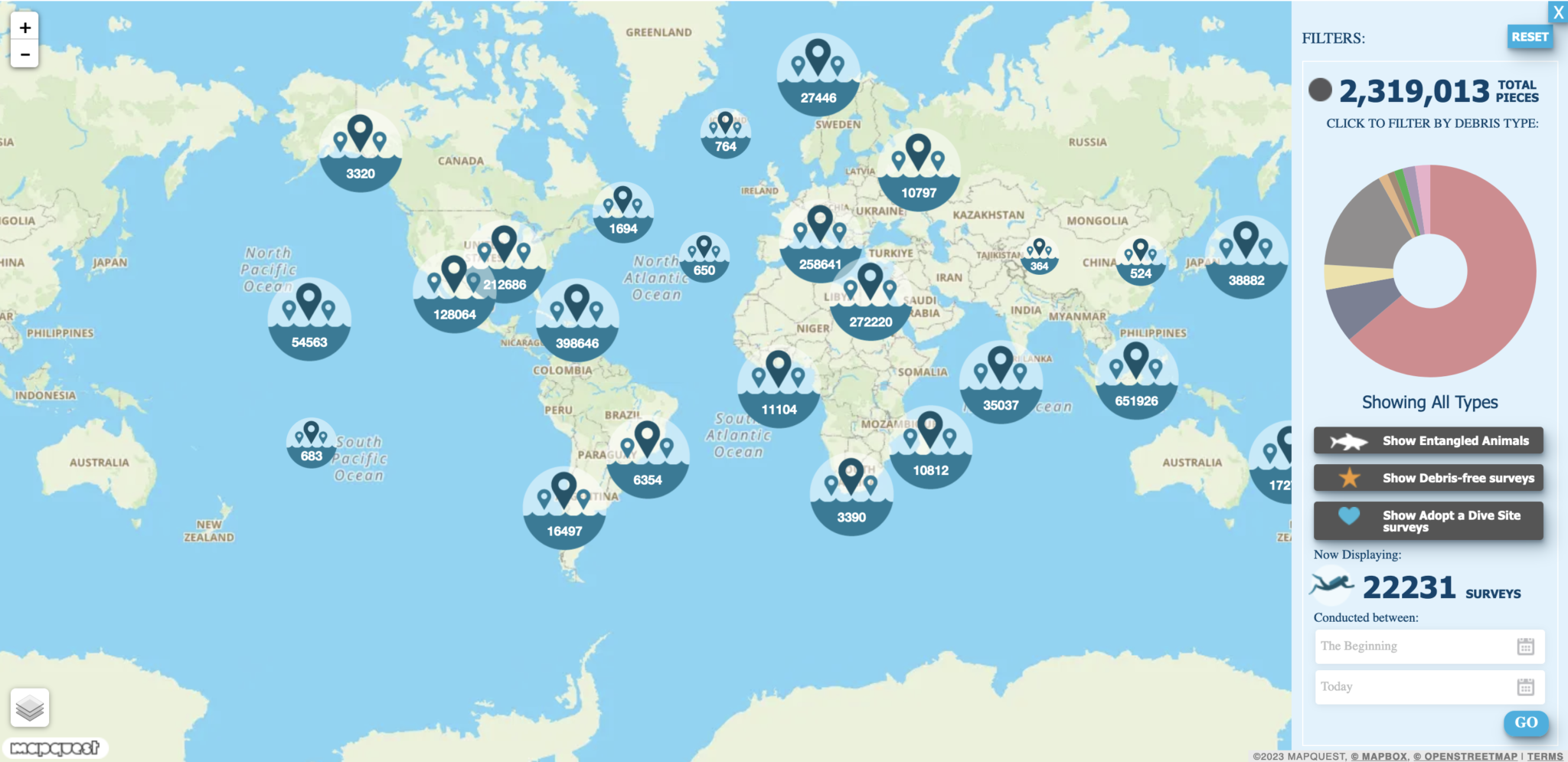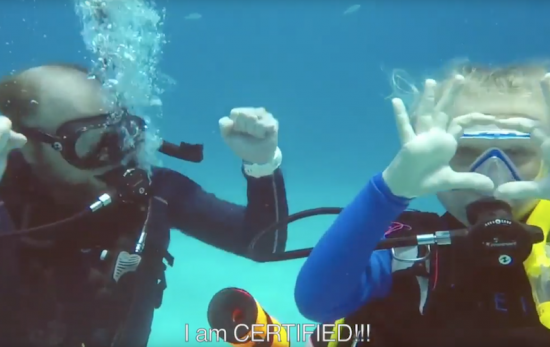Scuba diving hand signals are the secret language of divers. While many relish the tranquility and silence of the underwater world, the ability to communicate with our dive buddy isn’t just part of the fun – it’s essential for safety. By making shapes and gestures with your hands, you can (among other things):
- Give directions
- Signal different marine species
- Point out hazards
- Ask for help
Once you get good at using scuba diving signals, you can have entire conversations underwater. Some divers even find themselves using scuba signals on land. Most common scuba diving hand signals are also fairly universal, and two divers who don’t speak the same language topside can often communicate fluently underwater.

10 Hand Signals in Scuba Diving You Should Know
- Are you okay? / I’m okay.
- Ascend / Descend
- Stop
- I’m having trouble equalizing my ears
- Something’s wrong
- Follow me
- 3-minute safety stop
- I need help (emergency)
- I’m out of air
- How much air do you have?
As you can see from this list, scuba diving hand signals are key to safe diving, as they help us communicate with our buddy when something isn’t going to plan. In addition, there are plenty more underwater diving hand signals you can learn – from other beginner hand signals and those you’ll use in PADI courses to scuba diving signals for animals and even a few funny scuba hand signals!
Can You Translate These Scuba Diving Hand Signals?
- Wait. Look under that rock. There’s an eel. Do you want to take a photo of it?
- How much air do you have? I’m good on air.
- I’m having ear problems. Can we end this dive?
- Follow me to the boat. We’ll do a 3-minute safety stop, then ascend. Okay?
If you’ve forgotten the basic diver hand signals, check out the video above for a quick refresher before your next dive. You can also buy or download a Pocket Guide to scuba diving hand signals.
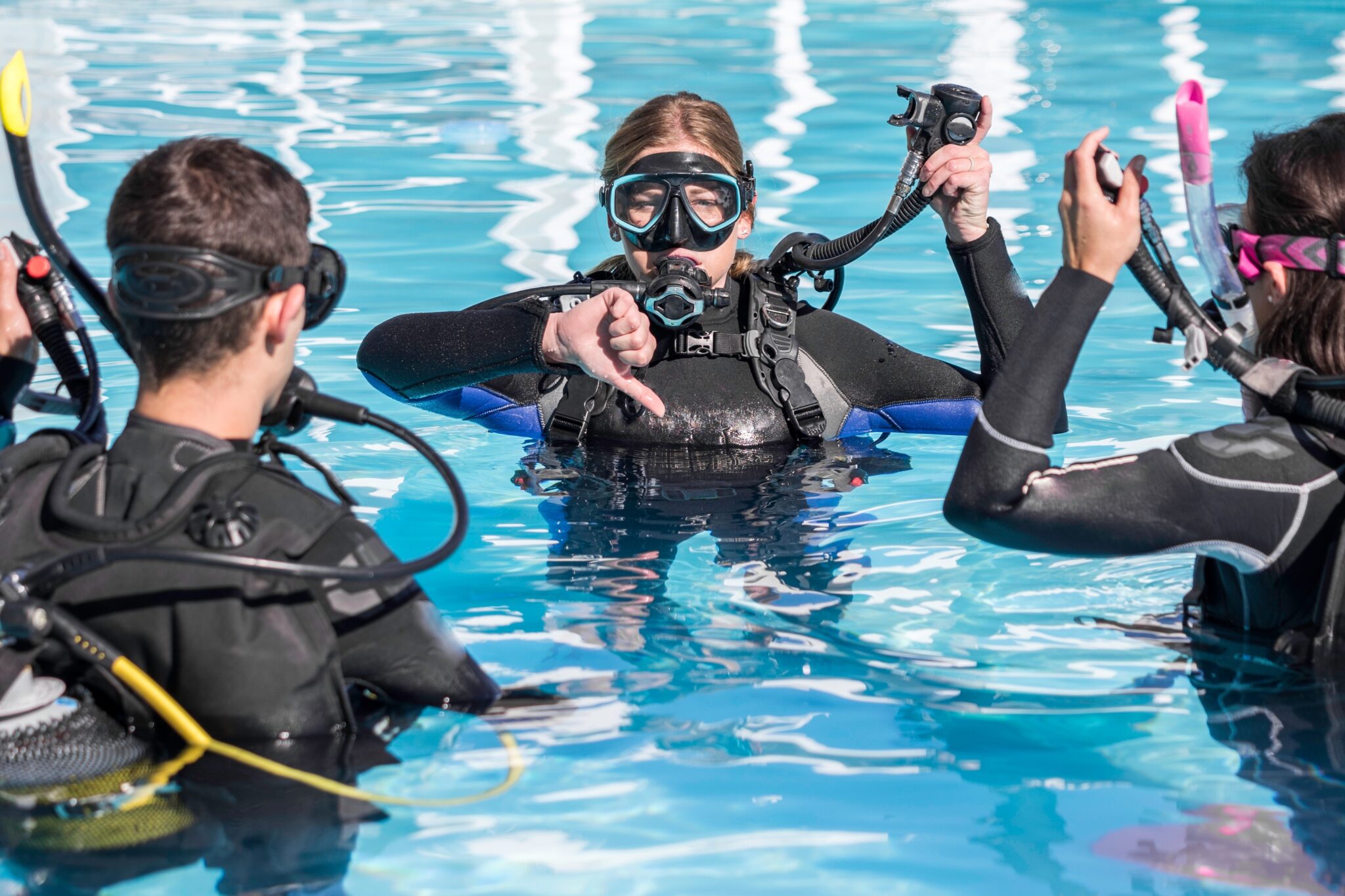
What Are the Hand Signals for Scuba Diving Instructors?
PADI Professionals (Divemasters and Instructors) learn additional dive signals to communicate with students underwater. Here are a few you might have seen your scuba instructor use during your Open Water Diver course:
- Everyone watch me
- Fill your mask with water halfway
- Try that skill again
- Well done!
- Remember, always blow bubbles when your regulator is out of your mouth
What Is the New PADI Hand Signal?
Since 2023, PADI scuba courses now include a new hand signal: “I don’t feel well”. Pointing your fingers toward yourself, draw a large oval in front of your head and torso if you want to tell your buddy you’ve started feeling physically unwell during your dive.
According to Divers Alert Network (DAN), “Having a specific signal for illness increases divers’ awareness of the importance of communicating if they feel unwell, and having a distinct method may prompt them to inform their buddy sooner. If a diver receives this signal from their buddy, it immediately alerts them to the issue and may encourage a quicker and more appropriate response”.
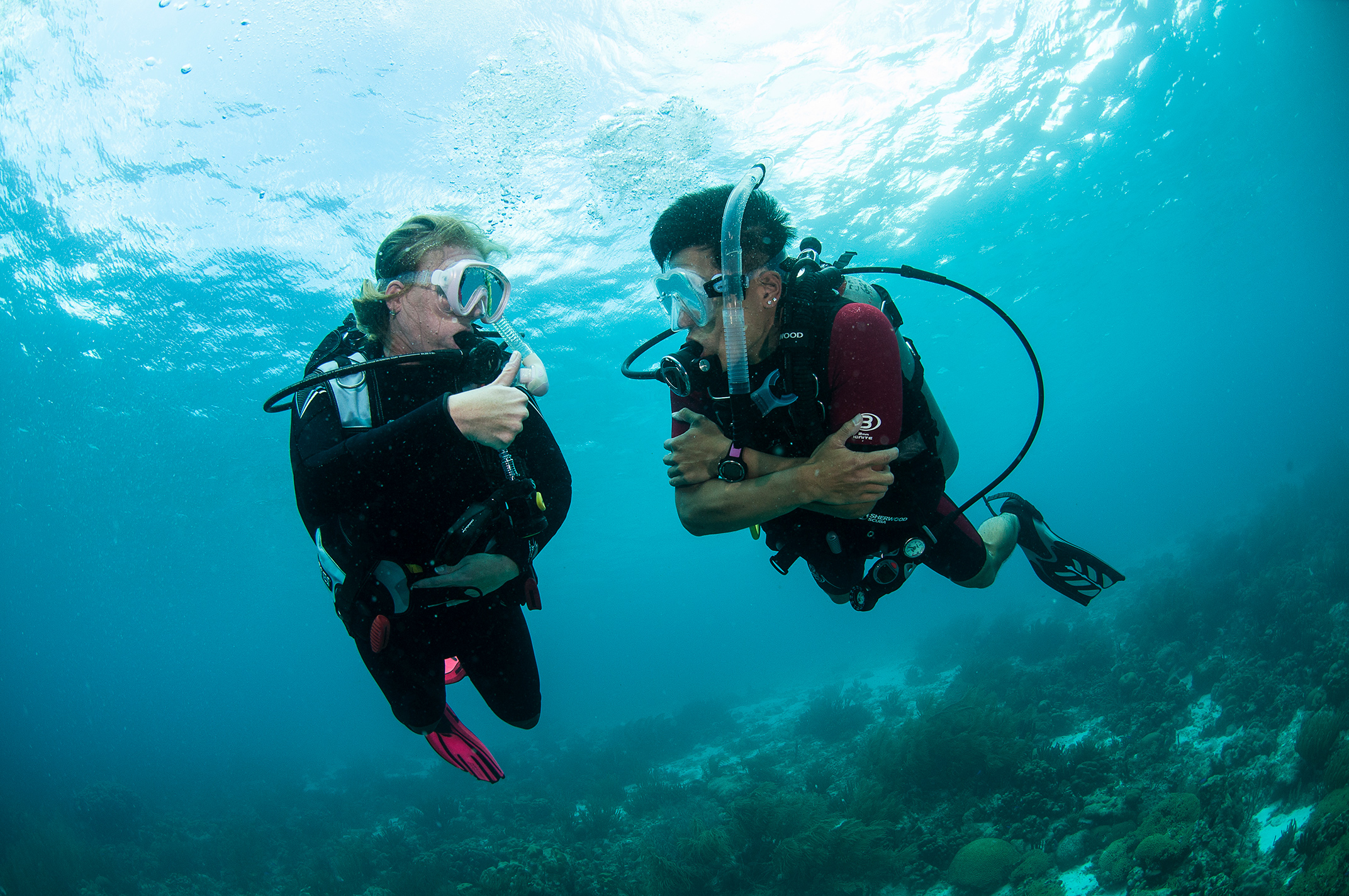
Can You Signal These Common Words and Phrases?
Ascend • Awesome • Boat • Breathe • Buddy Up • Come Here • Danger • Descend • Distressed Diver • Follow Me • Go This Way • Help • Hold Hands • How Much Air Do You Have? • I Am Cold • I Have a Problem Equalizing • Level Off • Look • Low On Air • Narcosis • Okay • Out Of Air • Share Air • Slow Down • Something Is Wrong • Stop • Three-Minute Safety Stop • Turn Around • Watch Me • Where Is The Boat? • Write It Down • You Lead, I Follow
Marine Life Hand Signals
The scuba diving hand signals for marine life are undoubtedly some of the most fun to learn – and use! Did you know there are widely used signals for:
- Sharks and rays
- Turtles
- Dolphins and whales
- Nudibranchs
- Octopuses and jellyfish
- Crabs and lobsters
- All sorts of fishes, from scorpionfish to barracuda
- …and many more!
Learn more about scuba diving hand signals for fish and other marine life in the video above. You can also read our blog dedicated to marine life hand signals which includes a scuba hand signals chart for different creatures.

P for Plastic Debris
In 2019, a group of Dutch divers and The Plastic Soup Foundation wanted to raise awareness about the massive problem with plastic. So, they created a new scuba diving hand signal for divers to tell their buddies they’ve seen plastic and want to pick it up. PADI and the PADI AWARE Foundation® encourage all divers to use the P for Plastic hand signal and then share the word by posting pictures and stories on social media using #PforPlastic.
Why Does Plastic Need Its Own Scuba Diving Hand Signal?
Our oceans and waterways are full of plastics. If nothing changes, there will be more plastic than fish in the oceans by 2050.
Encourage your friends and family to say “no” to single-use plastics such as straws, cutlery, and plastic bottles. Consider sharing a few eye-opening facts about ocean plastic, such as:
- The plastic in the ocean could cover Earth 400 times.
- 100,000 animals die every year after getting tangled in plastic, such as bags and nets.
- Fishing isn’t the biggest culprit. Instead, 80% of ocean plastic comes from our land activities.
Planet Earth needs its human citizens to go on a plastic diet. On average, each person in the European Union creates around 36 kilos (80 pounds) of plastic waste yearly, while each person in the United States uses an average of 365 plastic bags each year. Worldwide, 1 million plastic bottles are sold every minute.
A staggering amount of plastic waste ends up in our oceans. PADI AWARE has an interactive Dive Against Debris® map that allows you to see the amount of plastic trash collected in your local area, as well as totals from around the world. Experts say less than 10% of all plastic ever made has been recycled.
Underwater, we may have to use our hands to communicate, but topside we can be the voice for the ocean. Read more about how you can make a difference as an Ocean Torchbearer™.
Deaf Divers Use Underwater Sign Language
While hearing divers lose their communication method when diving, deaf divers continue to carry on entire underwater conversations. Indeed, many hand signals for scuba diving have their roots in traditional sign languages.
AmbassaDiver™ Thomas Koch is PADI’s first deaf Course Director. He shares, “The main thing is – we do not use signals underwater – we have a conversation underwater. One good example… the hearing divers have had to hold all those amazing things they saw until after the dive and say, ‘Did you see that beautiful fish, did you see this, did you see that….’ As for the deaf divers, we’ve already talked about it while diving.”
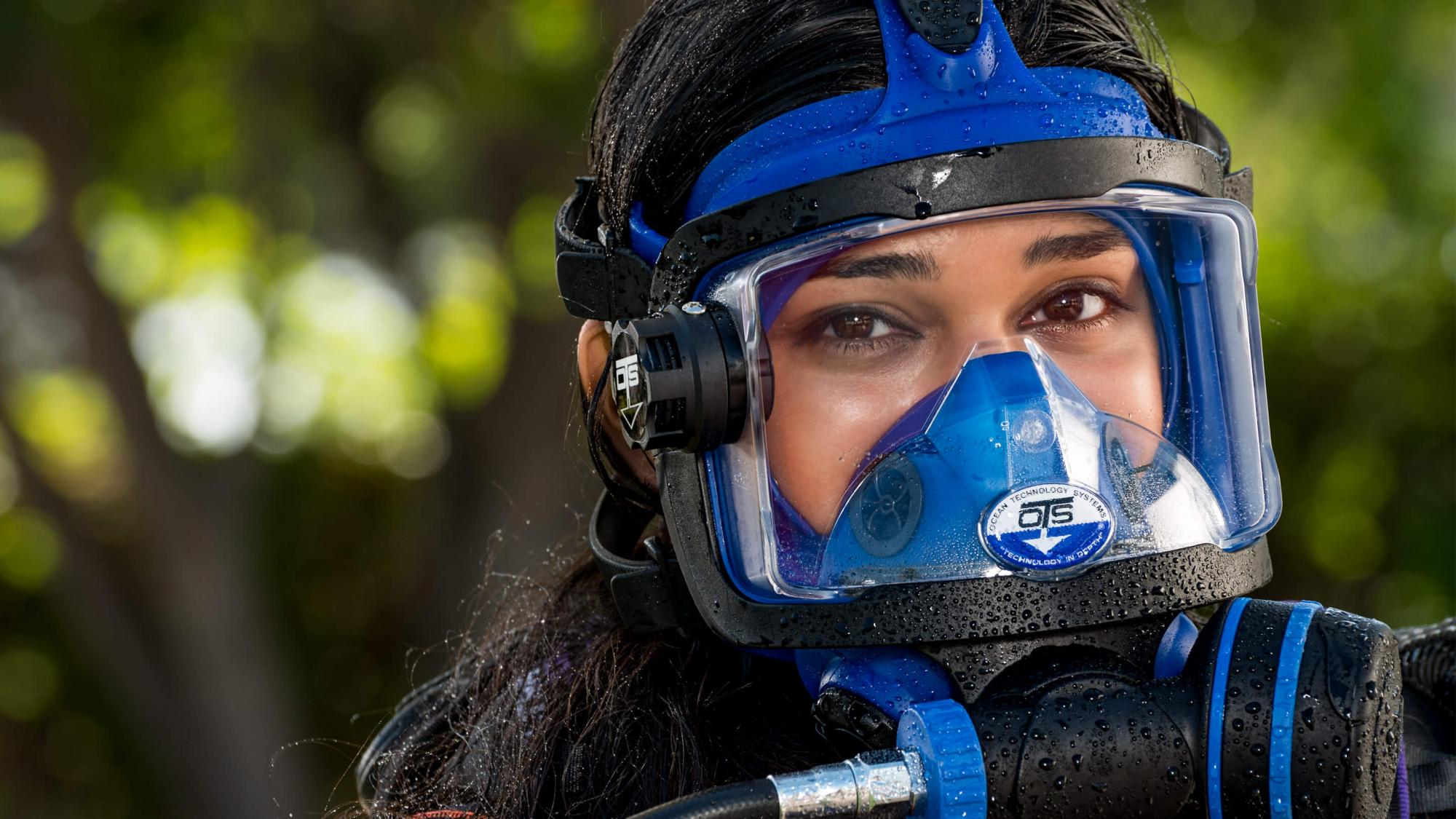
How Can You Talk While Scuba Diving?
Scuba diver hand signals are the most common way to “talk” underwater, but there are other options. For instance, you can use a slate and underwater pencil to scribble messages during your dive. You can also grab your buddy’s attention by banging your tank or giving the descent line a quick pull.
Full face masks can be equipped with communications technology, so you can literally speak to other divers or surface teams. In future, there could even be diving gloves that translate our scuba hand signs and gestures into computer messages!

Scuba Diving Hand Signals: Do’s and Don’ts
Here are five tips for giving the best scuba hand signals to your buddy.
- Do recap basic scuba diving hand signals during buddy checks. While most are universal, there can be regional differences.
- Don’t forget to answer. When your buddy gives you the “OK” signal, reply with “OK” (or tell them if something’s wrong).
- Do make them as clear as possible. Hold your hands away from your body, then signal slowly and use exaggerated gestures.
- Do illuminate your underwater hand signals with a dive light during night dives so your buddy can see them.
- Don’t be afraid to make up your own, especially for marine life (just make sure your buddy knows about them, too!)
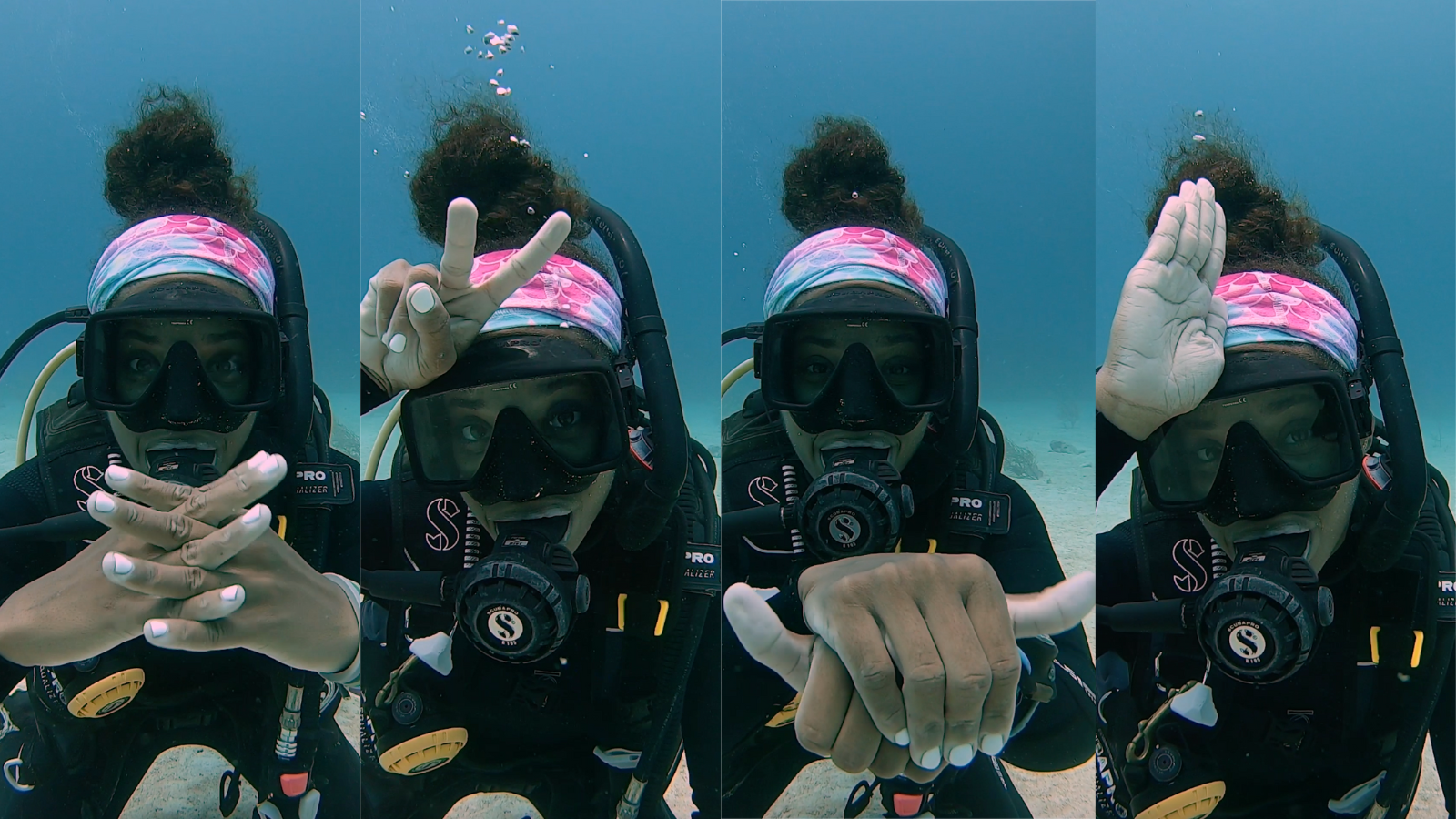
Put Your Scuba Diving Hand Signals to the Test
Whether you’ve just refreshed your memory on universal hand signals for diving or learned some advanced words and phrases, why not book your next PADI course and put your new skills to good use?
- Sign up for PADI Fish Identification and try your favorite scuba hand signals for marine life.
- Practice using emergency hand signals with PADI Rescue Diver.
- Share the P for Plastic hand signal during the Dive Against Debris course.
- Become a PADI Wreck Diver and signal the different parts of a shipwreck.

